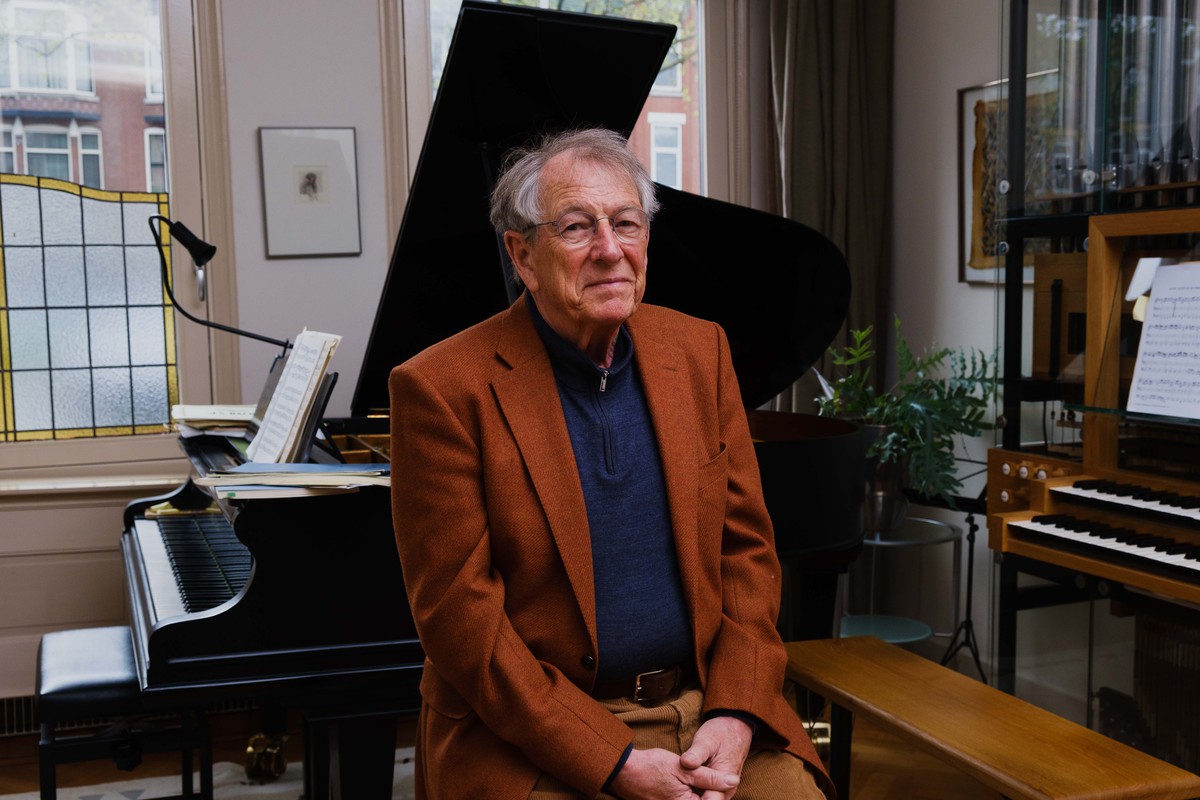The Faculty of Architecture burned down on 13 May 2008. Fifteen years later, people at TU Delft are using objects to look back. Part 3: the tent camp.
Wytze Patijn was dean of Architecture when "his" faculty burned down. (Photo: Jaden Accord)
After the fire the students and staff members wanted to get on with their work as quickly as they could. The Faculty was given space and help from various quarters: books about architecture arrived from universities around the world and a work space was set up at Applied Physics to which IKEA donated furniture.
The most unusual accommodation were the tents that were put up on the grounds just one week after the building went up in flames. This was exceptionally fast, says the then Dean Wytze Patijn. “Everyone wanted to help.”
Even De Parade, a touring theatre festival, lent a tent, says Patijn. “I phoned Terts Brinkhoff, the head of De Parade. He said ‘Not only will I bring a tent, I will also bring a show’.” It was an extra long festival that would run from 27 May to 3 July and it included a silent disco, cabaret artists, and a performance by the rock band Convoi Exceptional. Between the performances, the De Parade tent was used by students and staff members as a meeting place.
The tent camp, given the nickname BK City, only stood there for three months in the end. In the meantime, the search for a new building was in full swing. Apart from the previous main building on the Julianalaan where Architecture and the Built Environment had been housed for more than 30 years, there were three other options.
The first two options – an old cable factory on the Schieweg and a TNO building – were quickly discounted. They needed too much renovation to be turned into a new home.
The third option, a temporary building on X’s sports fields, took even more inventiveness. “We asked a greenhouse builder if he could erect a glass building there consisting of two floors.” This turned out to be within the realms of possibility, but the idea was rejected as the zoning plan procedure to turn it from a ‘sports field’ into ‘buildings’ would take at least three months.
Patijn did not have the time. So the offer of TU Delft’s former main building on the Julianalaan came at the right time. TU Delft had sold the imposing building to an investment company called Fortis, but it was still empty while awaiting refurbishment into luxury flats. The sale did not get off the ground. “The strong economic crisis of 2008 worked in our favour,” says Patijn, “So Fortis said that we could have the building back. We could start with the renovation and the negotiations about the price would be done later.”
This was a very welcome break. “In terms of usable square metres, the building was very similar to the old building. And we could create some extra space beneath the large canopies, such as in the Oostserre.”


At the beginning of September, not even four months after the fire, the main building was ready to receive the new first years. They were not the only ones there as there were still plenty of construction site workers around too. “This was education with a difference,” says Patijn.
The main building was initially intended to be used for five years. Minister Plasterk of Education pledged EUR 25 million (in Dutch) from the Government on the condition that a new building would be constructed. Plans were in circulation for a new building in the Wippolder residential neighbourhood. Some of the plans even came from an international competition held at the Biënnale in Venice.
- Also read: Overleg over 25 miljoen voor Bouwkunde (in Dutch)
The final decision was taken in 2011: instead of a new building, the Faculty opted to be housed in the existing building on the Julianalaan. Plasterk demanded the EUR 25 million back, upon which TU Delft went to court (in Dutch) to still be able to use (in Dutch) that sum of money. Architecture and the Built Environment is still located in BK City, the building on the Julianalaan. “Indeed, the building is named after the tent camp,” says Patijn.
- This interview is part of series of stories about the fire at the Faculty of Architecture and the Built Environment. Also read the interviews with Franziska Bollerey – who lost her archive – and with Marcel Janssen and Hans Kaiser, who saved historic books from the Faculty.
Do you have a question or comment about this article?
K.S.vanderWal@tudelft.nl


Comments are closed.